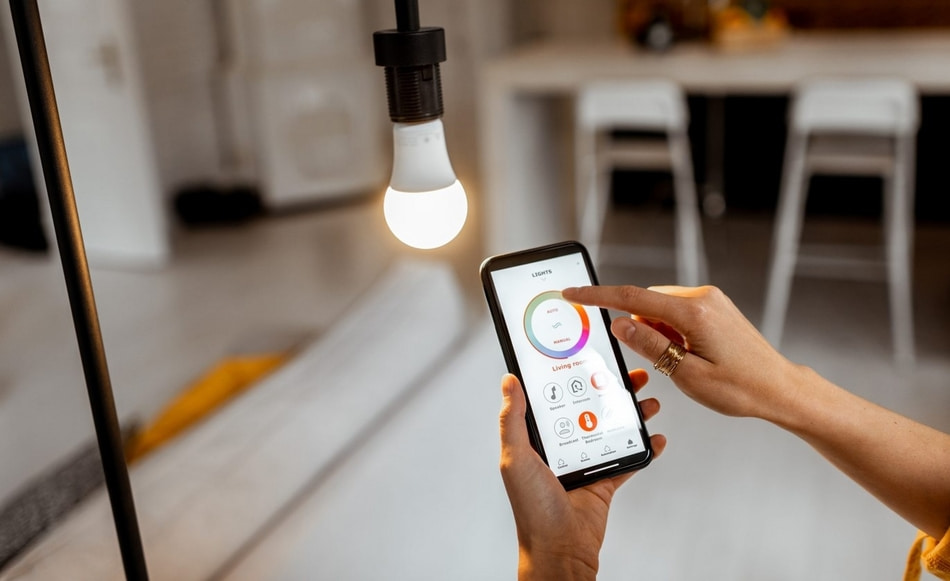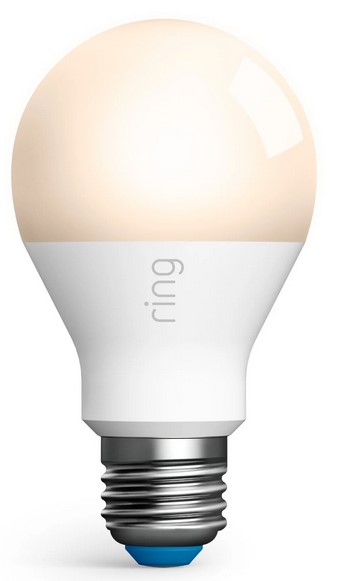Do Smart Bulbs Use Power (Electricity) When Off?

Changing from traditional lighting to smart bulbs can be a very smart move. However, the initial investment is slightly larger in the beginning, while on the other hand, they bring significant savings in the long term. But what makes smart bulbs special, and do they consume power even when they are turned off?
In this article, we will explore smart bulbs, the reasons why they consume electricity (power) even when they are off, and how to use them efficiently. So, let’s start!
Do Smart Bulbs Use Electricity When Off? Yes, smart bulbs use a small amount of electricity even when off. This is because they maintain a connection to your Wi-Fi or Bluetooth to receive commands, which requires power. This term is also known as ‘vampire power’. However, the energy used is minimal compared to when the bulb is on.
When considering the benefits, drawbacks, and total expenses of setting up smart bulbs, their energy savings should be your primary concern. Indeed, smart bulbs are not cheap. However, like many electronic devices, their purchase is profitable in the long term.
Therefore, when examining the long-term costs of smart bulbs, it’s crucial to understand how they function and whether they consume electricity even when they’re turned off. So let’s see.
First, What Is a Smart Bulb?

A smart bulb is a type of LED light bulb that can be managed from afar thanks to its integrated technology. Using Bluetooth or Wi-Fi, you can turn on a smart bulb via a smartphone app or through a voice assistant (Alexa).
Note! A smart bulb is an ideal starting point for automating your home.
Regardless of the slightly higher starting price, it offers several features like adjusting brightness and modifying colors. Many companies produce smart bulbs that are explicitly designed to operate seamlessly with specific hubs.
Related Article: Cost Of Running A Refrigerator (10 Tips To Save Power)
How Does a Smart Bulb Work?
To better understand why smart bulbs still need a bit of power even when not in use, it’s essential to realize how they work. One thing is for sure, smart bulbs are significantly different from normal bulbs.
Although at first, it seems as if they are the same as normal ones, they are a lot different because they consume much less energy. Here is what you need to know:
Smart Bulbs Have Connection With The Internet
One of the main differences between a normal lights and a smart bulb is its connection capabilities. Smart bulbs are not just connected to your electrical circuit but also to your Wi-Fi and Bluetooth.
This kind of connection makes smart bulbs capable of interacting with other smart devices in your home and not just relying on traditional switches.
Smart Bulbs Come With Additional Features
Beyond their basic lighting function, smart bulbs come packed with a lot of extra features. Many of them can alter their color, offering an array of shades at your command and adjusting their brightness level.
This feature allows you to create different environments in and outside the room without manually adjusting the bulbs.
Related Article: CCTV Camera Power Consumption Calculator
Smart Bulbs Can Be Connected to Smartphone
One of the most attractive features of smart bulbs is their ability to be controlled via your phone, and in some cases, by your voice commands. These bulbs connect to Bluetooth or Wi-Fi, enabling them to receive instructions from an application on your phone or via voice.
This lets you switch lights on and off or adjust their brightness without moving a muscle, making them an essential smart home component. Additionally, you can program these smart bulbs very detailedly from anywhere worldwide.
The ability to use lights only when needed and adjust them from anywhere contributes to significant savings on your electricity bill.
Most Smart Bulbs Use Less Electricity
Smart bulbs use much less electricity than normal ones. Therefore, it’s not surprising that these innovative types of lights, such as smart bulbs, are extremely energy-saving. Although they give the same light (if not more) than normal bulbs, their consumption is drastically lower.
Here is one video that might help you understand them better:
Why Smart Bulbs Use Electricity Even When Turned Off
There is a very logical explanation for why smart bulbs consume electricity even when turned off. Just like your smartphone can’t accept calls when powered off, smart bulbs also need the energy to stay ready to receive instructions. Similar to other smart gadgets, like Amazon Alexa, smart bulbs also enter a low-power “sleep” state when they’re not active.
Yes, smart bulbs do consume a small amount of electricity when they’re off, but it’s insignificant because they’re neither providing light nor consuming a lot of power during this standby phase. They merely need a small amount of energy to remain in standby mode.
For those who don’t know, even though smart bulbs consume some energy when switched off, it’s so minimal that it’s unlikely to cause a noticeable increase in your electric bill. Generally, a smart bulb’s off-mode power consumption is very small and negligible.
Related Article: How Much Electricity (Power) Does A Fan Use?
How Do Smart Lights Use Power When They’re Off?
Smart bulbs fall under the electronics category known as “vampire devices.” These are mostly devices that consume electricity at any time, whether they are on or off.
This means that vampire devices draw power even when they are not used. Surprisingly, numerous such devices exist in your home, from phone chargers and coffee machines to blenders and more. Smart bulbs are also part of this group.
Despite being vampire devices, smart bulbs don’t significantly increase an electric bill when not in use. On average, each smart bulb adds only a few pennies to your monthly electricity bill when switched off.
This means that even if you own multiple smart bulbs in a home, the annual cost might amount to just a dollar or two. Given that the cost is so low, it should not dissuade you from considering smart bulbs if they interest you.
Related Article: How to Connect Multiple Bluetooth Speakers to One Device
How Much Can You Save With Smart Bulbs?

How much money and electricity you can save by using smart bulbs depends on factors such as the cost of electricity per kilowatt-hour and the types of bulbs you have.
Example: A typical LED bulb increases your electricity costs by approximately $1 yearly, while a similar incandescent bulb could add $7. So, you can save around $6 annually for each bulb you replace with a smart bulb.
As per ENERGY STAR, a typical American household has over 40 light bulb sockets. This implies that such a house could cut down its electricity expenses by as much as $240 annually by switching to smart lighting. Here is a table with the pros and cons of each one:
| Smart Bulbs | Regular Bulbs | |
|---|---|---|
| Power Consumption | Lower due to energy-efficient design | High power consumption |
| Cost | Lower initial cost but frequent replacement | Controlled only via physical switch, limited to on/off functionality |
| Lifespan | Up to 25 times longer than regular bulbs | Shorter lifespan |
| Control Options | Controlled remotely, offer color changing and brightness adjusting options | Controlled only via a physical switch, limited to on/off functionality |
| Energy Efficiency | 30-40% more energy efficient than a typical incandescent bulb | Less energy efficient, especially incandescent bulbs |
| Compatibility | Compatible with smart home systems | Not compatible with smart home systems |
| Standby Power Usage | Use a small amount of electricity even when turned off (in standby mode) | Do not use electricity when turned off |
| Safety | Lower heat output, reducing fire risk | Can get hot, posing a slight fire risk |
How Do Smart Bulbs Save Energy?

However, smart bulbs offer more than the average LED light bulb by providing extra capabilities that could lead to even more savings. We aim to explain precisely how these intelligent lights operate so you can harness these cost-saving benefits in your home.
1. They Can Be Operated Remotely
A key feature of smart bulbs that aids in saving money is their ability to be controlled from anywhere. This functionality is not only extremely convenient but also helps in reducing your electricity bill.
This allows you to switch off your home lights when not needed quickly. Additionally, it offers advanced timer features to ensure lights are only on when necessary.
2. Smart Light Use Less Electricity
Modern technology doesn’t just offer convenience, but it can also help you to save money. Today’s LED lights are considerably more efficient than traditional bulbs. Furthermore, smart lights don’t generate as much heat as regular bulbs.
Owing to these factors, they consume much less energy. Therefore, while the upfront cost of $40 or $50 might seem a lot, keep in mind the long lifespan of smart bulbs and the potential for long-term savings.
3. Additional Control Options
An added advantage of smart bulbs that boosts their energy efficiency beyond other LED smart lights is their ability of different lighting options.
By using smart bulbs, you can easily adjust the brightness in the room. This means you can achieve the ideal lighting anytime and ensures you’re not consuming more power than necessary.
4. Smart Bulbs Produce Less Heat
Another feature that makes smart bulbs excellent and eco-friendly is their working temperature. Smart bulbs tend to function at significantly lower and more stable temperatures than standard light bulbs. This equates to reduced electricity usage.
It’s also generally a safer choice. Hence, this is another factor that needs to be considered when deciding if the power consumption of smart bulbs, when they’re turned off, is of significant concern to you.
Smart Bulbs Vs Normal Bulbs For Energy Efficiency

After getting this far, you already know that smart bulbs consume power even when turned off. However, regardless of that, they are still considered more energy-efficient than normal light bulbs. For that reason, a smart bulb is 40% more energy efficient compared to a regular incandescent light bulb.
Furthermore, longevity plays a vital role. Smart bulbs have a lifespan significantly higher than normal bulbs. In fact, these bulbs can last up to 20 times more than traditional ones.
While they might be more expensive in the beginning, the cost of frequently replacing cheaper bulbs adds up. Overall, smart bulbs outperform in various ways, most notably in terms of energy conservation and lifespan.
Final Thoughts
Despite being extremely efficient and energy-saving, smart bulbs do consume a minor amount of electricity when turned off. They don’t fully power down but instead, go into a type of standby mode. This ensures that you can turn them on or off at any time.
Fortunately, the energy they consume in this state is minimal. To put it in perspective, a typical smart bulb costs just a few pennies in energy per month while in standby mode. I hope that this article has helped you, and if you have any additional questions, feel free to comment below.
